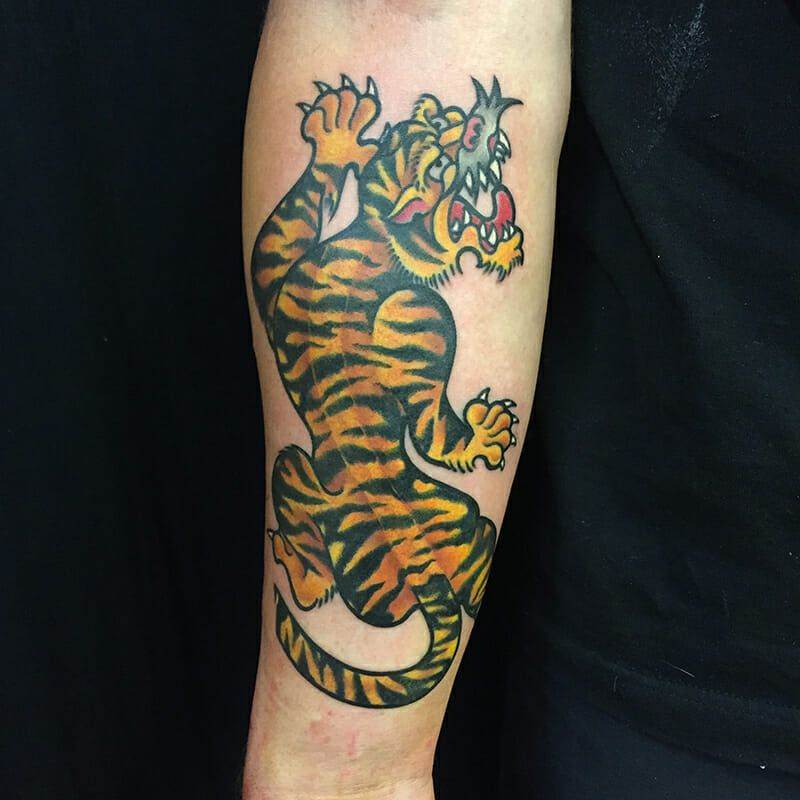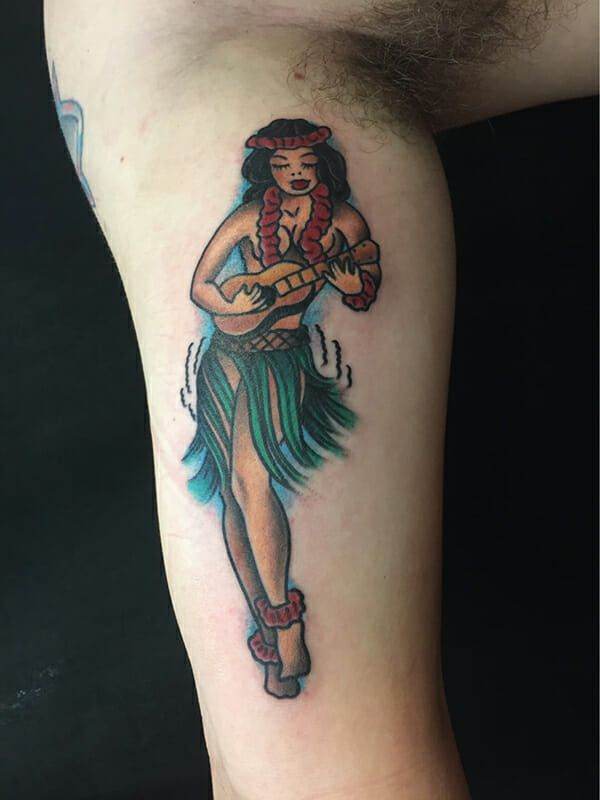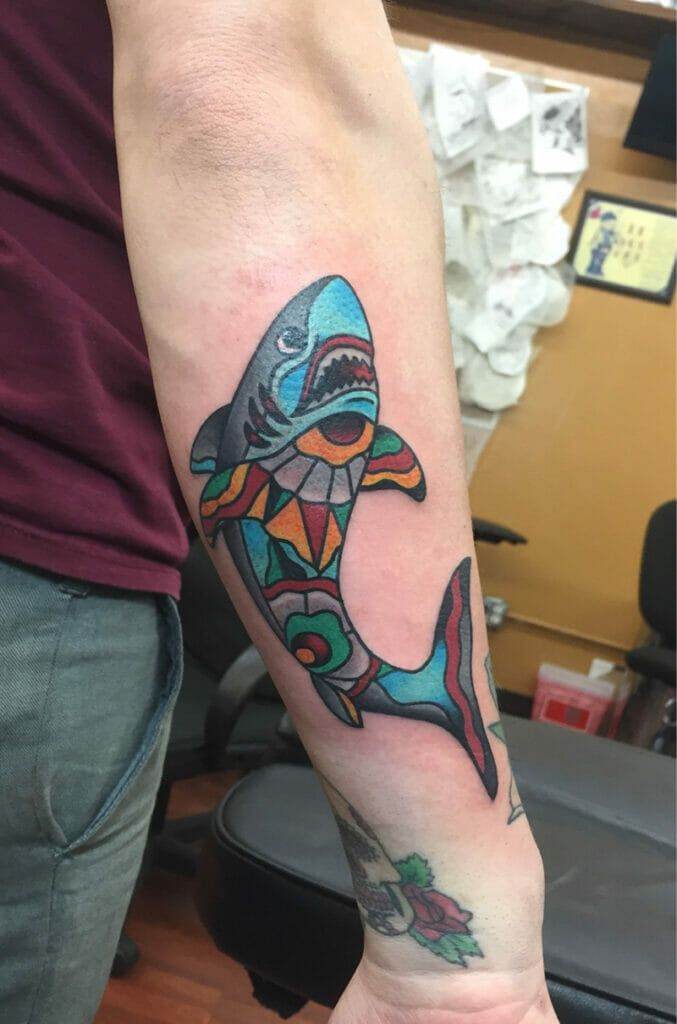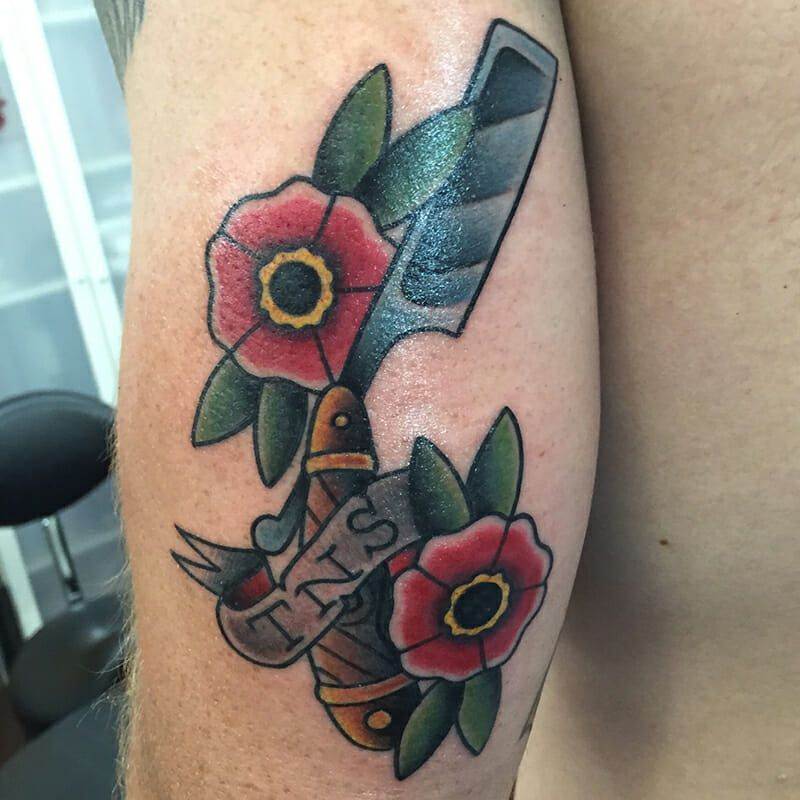Traditional tattooing is an ancient art form that has been practiced for centuries in various cultures around the world. It involves using a needle and ink to create permanent designs on the skin. Traditional tattooing holds great significance in many cultures, serving as a form of self-expression, cultural identity, and spiritual connection. The art of traditional tattooing has evolved over time, but its enduring beauty and cultural importance remain.
In different cultures, traditional tattooing has different meanings and purposes. In some cultures, tattoos are seen as a rite of passage, marking important milestones in a person’s life. In others, tattoos are used to symbolize one’s status or rank within a community. Traditional tattooing is also often associated with spiritual beliefs and practices, with tattoos serving as a form of protection or connection to the divine. The art of traditional tattooing is deeply rooted in cultural traditions and customs, making it an integral part of many societies.
The Origins of Traditional Tattooing
The origins of traditional tattooing can be traced back thousands of years. It is believed to have originated in ancient Egypt, where tattoos were used for both decorative and medicinal purposes. The practice then spread to other parts of the world, including Polynesia, Southeast Asia, and the Americas.
In Polynesia, traditional tattooing is known as tā moko or tātatau. It has been practiced by the indigenous people of New Zealand (Māori), Samoa, Tahiti, and other Pacific islands for centuries. These tattoos are highly intricate and often tell a story or represent one’s genealogy. In Polynesian culture, tattoos are seen as a sign of strength, courage, and identity.
In Southeast Asia, traditional tattooing has been practiced by various indigenous tribes for centuries. For example, the indigenous people of Borneo (Dayak) have a rich tradition of tattooing, with each design representing a specific meaning or belief. These tattoos are often used to protect against evil spirits or to mark important life events.
In the Americas, indigenous tribes such as the Native Americans and the Inuit have also practiced traditional tattooing for centuries. These tattoos often symbolize one’s connection to nature, ancestors, or tribal traditions. They are seen as a way to honor and preserve cultural heritage.
The Rise of Western Tattooing
The popularity of traditional tattooing in Western culture can be traced back to the 18th and 19th centuries when sailors and explorers brought back stories and tattoos from their travels. These tattoos were often seen as exotic and mysterious, and they quickly gained popularity among the working class in Europe and North America.
During this time, traditional tattooing became associated with rebellion and counterculture. It was embraced by marginalized groups such as sailors, prisoners, and circus performers. Tattoos became a way for these individuals to express their identity and assert their independence.
The impact of Western tattooing on traditional tattooing has been significant. As Western tattooing gained popularity, traditional tattooing practices in many cultures started to decline. Traditional tattoo artists were often stigmatized or forced to adapt their designs to cater to Western tastes. However, some traditional tattoo artists managed to preserve their craft and pass it down through generations.
The Revival of Traditional Tattooing
In recent years, there has been a resurgence of interest in traditional tattooing. People are increasingly drawn to the authenticity and cultural significance of traditional tattoos. This revival can be attributed to several factors.
Firstly, there has been a growing appreciation for indigenous cultures and their art forms. People are seeking out traditional tattoo artists who have a deep understanding of cultural traditions and can create designs that are meaningful and respectful.
Secondly, there has been a backlash against mass-produced tattoos and the commercialization of the tattoo industry. Many people are now seeking out traditional tattoo artists who use traditional techniques and hand-poke their designs. This return to traditional methods is seen as a way to reclaim the authenticity and craftsmanship of traditional tattooing.
Lastly, social media has played a significant role in the revival of traditional tattooing. Platforms like Instagram have allowed traditional tattoo artists to showcase their work to a global audience, gaining recognition and attracting clients from all over the world. This exposure has helped to popularize traditional tattooing and bring it back into the mainstream.
The Influence of Indigenous Tattooing

Indigenous tattooing has had a profound influence on traditional tattooing practices around the world. Many traditional tattoo artists draw inspiration from indigenous designs and techniques, incorporating them into their own work.
For example, Polynesian tattoos have had a significant impact on traditional tattooing in Western culture. The bold, geometric designs and intricate patterns of Polynesian tattoos have become popular among tattoo enthusiasts worldwide. These designs often incorporate symbols and motifs that hold deep cultural and spiritual meaning.
Similarly, indigenous tattooing practices in Southeast Asia have influenced traditional tattooing in the region. The use of hand-tapping techniques and natural pigments derived from plants and minerals is a common feature in both indigenous and traditional tattooing.
The role of indigenous tattooing in traditional tattooing goes beyond aesthetics. Indigenous tattoos often carry deep cultural significance and are used to convey important messages or beliefs. By incorporating these elements into their designs, traditional tattoo artists are able to create tattoos that are not only visually striking but also culturally meaningful.
The Role of Technology in Traditional Tattooing
Technology has had a significant impact on traditional tattooing, both positive and negative. On one hand, technological advancements have made the process of getting a tattoo faster, safer, and more precise. Modern tattoo machines allow artists to create intricate designs with greater ease and accuracy.
Additionally, technology has made it easier for traditional tattoo artists to connect with clients and showcase their work. Social media platforms and online portfolios have become essential tools for traditional tattoo artists to promote their art and attract clients from around the world.
However, there are also drawbacks to the use of technology in traditional tattooing. Some argue that the use of tattoo machines and modern techniques takes away from the authenticity and craftsmanship of traditional tattooing. Hand-poked tattoos, for example, are seen as a more traditional and intimate form of tattooing that requires skill and precision.
Furthermore, the accessibility of tattooing equipment and supplies has led to an increase in amateur tattooing. This has raised concerns about safety and hygiene standards, as inexperienced individuals attempt to perform tattoos without proper training or knowledge.
The Importance of Symbolism in Traditional Tattooing
Symbolism plays a crucial role in traditional tattooing. Each design carries its own meaning and significance, often representing personal beliefs, cultural traditions, or spiritual connections.
Symbols used in traditional tattooing can vary widely depending on the culture and individual preferences. For example, in Polynesian culture, symbols such as the turtle, shark, or sun represent strength, protection, and prosperity. In Native American culture, symbols like feathers, arrows, or dreamcatchers are often used to symbolize spirituality or connection to nature.
The meanings behind these symbols are deeply rooted in cultural traditions and beliefs. Traditional tattoo artists have a deep understanding of these symbols and their significance, ensuring that each design is meaningful and respectful.
The Globalization of Traditional Tattooing
Traditional tattooing has become a global phenomenon, with traditional tattoo artists and enthusiasts from all over the world embracing this ancient art form. The globalization of traditional tattooing can be attributed to several factors.
Firstly, increased travel and cultural exchange have allowed people to discover different tattoo traditions and styles from around the world. This has sparked interest in traditional tattooing and led to its adoption in different cultures.
Secondly, the rise of social media and the internet has made it easier for traditional tattoo artists to connect with a global audience. Artists can now showcase their work online, attracting clients from all over the world. This has helped to popularize traditional tattooing and bring it into the mainstream.
Lastly, the growing appreciation for authenticity and cultural heritage has contributed to the globalization of traditional tattooing. People are seeking out traditional tattoo artists who have a deep understanding of cultural traditions and can create designs that are meaningful and respectful.
The Future of Traditional Tattooing
The future of traditional tattooing is both exciting and uncertain. On one hand, there is a growing interest in traditional tattooing, with more people seeking out traditional tattoo artists and embracing the cultural significance of traditional tattoos.
However, there are also challenges that traditional tattooing faces. The commercialization and mass production of tattoos have led to a dilution of traditional techniques and designs. Traditional tattoo artists must navigate this landscape while preserving the authenticity and craftsmanship of their art.
Additionally, there is a need for cultural sensitivity and respect when it comes to traditional tattooing. It is important for artists and enthusiasts to understand the cultural significance behind traditional tattoos and approach them with respect and understanding.
Despite these challenges, the future of traditional tattooing looks promising. As long as there are artists who are passionate about preserving this ancient art form and people who appreciate its beauty and cultural significance, traditional tattooing will continue to thrive.
The Impact of Traditional Tattooing on Modern Culture
Traditional tattooing has had a significant impact on modern culture, particularly in the realms of fashion and art. Traditional tattoo designs have become popular motifs in clothing, accessories, and home decor. They have been embraced by fashion designers, streetwear brands, and artists who draw inspiration from the rich history and symbolism of traditional tattoos.
Traditional tattooing has also influenced contemporary art, with many artists incorporating traditional tattoo techniques and designs into their work. This fusion of traditional tattooing and fine art has created a new wave of creativity and innovation in the art world.
Furthermore, traditional tattooing has played a role in shaping modern subcultures and identities. Tattoos have become a form of self-expression and a way for individuals to assert their individuality and personal beliefs. Traditional tattoos, in particular, are often seen as a way to connect with cultural heritage and preserve traditions in an ever-changing world.

The Enduring Beauty of Traditional Tattooing
In conclusion, traditional tattooing is an ancient art form that holds great significance in many cultures around the world. It is a form of self-expression, cultural identity, and spiritual connection. The art of traditional tattooing has evolved over time, but its enduring beauty and cultural importance remain.
The origins of traditional tattooing can be traced back thousands of years, with different cultures developing their own unique styles and techniques. The rise of Western tattooing in the 18th and 19th centuries had a significant impact on traditional tattooing practices, but in recent years there has been a revival of interest in traditional tattooing.
Indigenous tattooing has played a crucial role in shaping traditional tattooing practices around the world. Symbols and techniques from indigenous cultures have been incorporated into traditional tattoo designs, adding depth and meaning to each piece.
Technology has had both positive and negative impacts on traditional tattooing. While it has made the process faster and more precise, some argue that it takes away from the authenticity and craftsmanship of traditional tattooing.
The future of traditional tattooing is promising, with more people embracing the cultural significance of traditional tattoos. However, there are challenges that must be navigated to preserve the authenticity and craftsmanship of this ancient art form.
Traditional tattooing has had a significant impact on modern culture, influencing fashion, art, and personal identity. Traditional tattoo designs have become popular motifs in clothing and accessories, and traditional tattoo techniques have been incorporated into contemporary art.
In conclusion, the enduring beauty of traditional tattooing lies in its ability to connect people to their cultural heritage, express personal beliefs, and preserve ancient traditions. As long as there are artists and enthusiasts who appreciate the significance of traditional tattoos, this ancient art form will continue to thrive and inspire.



